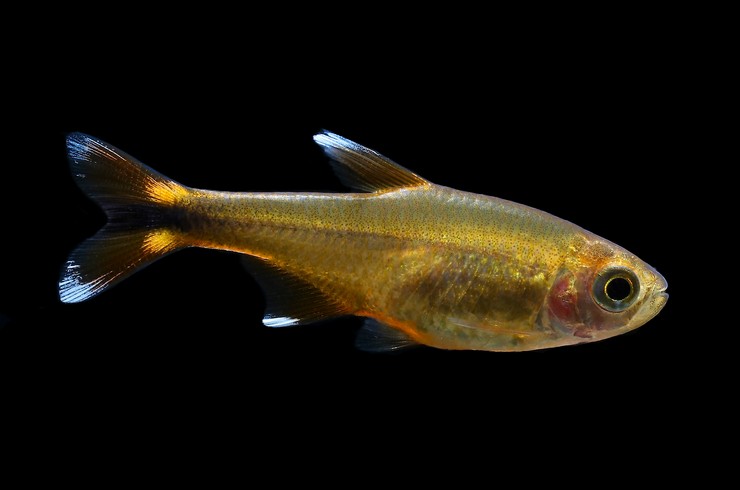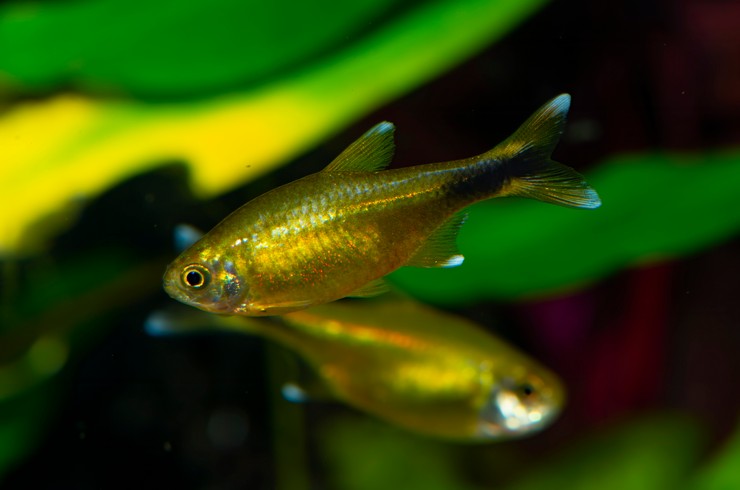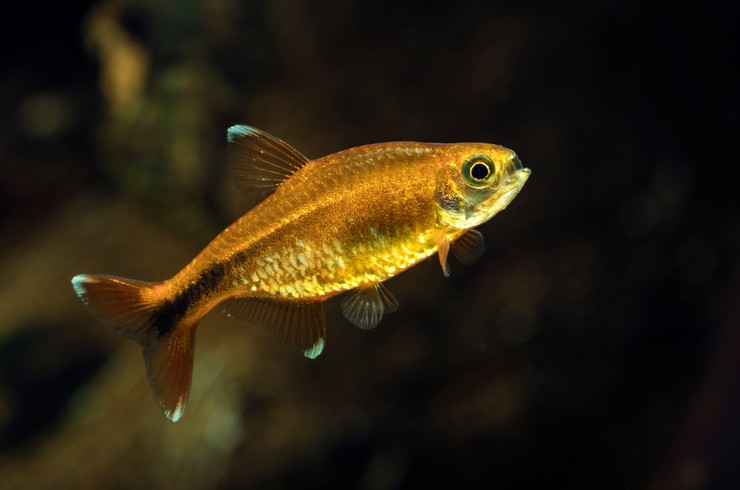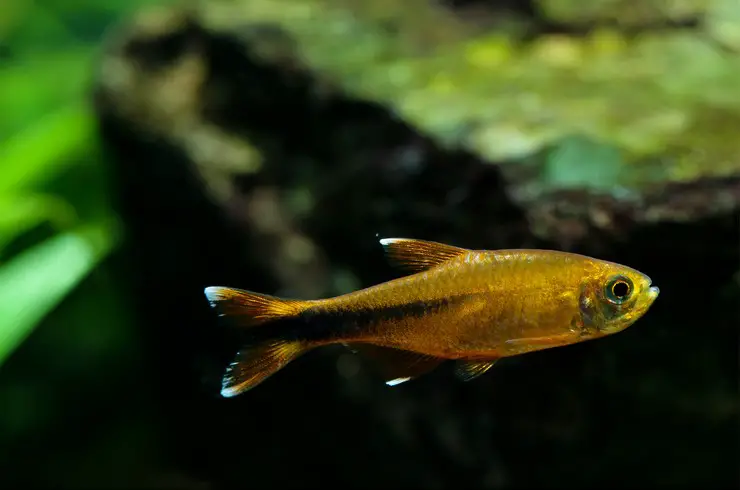If you really liked the tetra fish from South America, but you do not know which species to start acquaintance with, then be sure to pay attention to the copper tetra. They are hardy, beautiful, and very mobile pets, observing which will give you indescribable emotions. In our article, we will talk in more detail about how to properly contain these fussy Kharacin.
General information
Copper tetra or Tasmania nana (Hasemania nana) is a freshwater ray-finned fish from the Kharacin family. The species originates from the rivers of South America. It is named after the American ichthyologist and aquarist John Hasman.
This fish is rightfully considered one of the best tetras for beginner aquarists. It ideally combines bright color, unpretentiousness to conditions of detention, and a peaceful character.
The availability of this species cannot but rejoice. It is difficult to find a pet store where you could not purchase a copper tetra.
Let’s take a closer look at how to keep this fish in captivity and whether it is possible to get offspring from it.
Appearance
The miniature size is one of the advantages of the copper tetra. The length of an adult fish does not exceed 5 cm. Therefore, you do not need a huge container for keeping it. Hasemania nana has a slender, elongated body. The tail is V-shaped, with two lobes. The small head has a small mouth and large eyes with a yellowish edging.
The fins are small, translucent. The adipose fin is absent in the tetra.
The main body color of a copper tetra is golden, with a rich copper tint. A wide dark stripe stretches from the caudal peduncle to the base of the tail. The tips of the caudal, anal, and dorsal fins are white, reminiscent of signal lights when the fish is swimming fast.
Habitat
In nature, the copper tetra can be found in the basin of the San Francisco River, located in Brazil. The fish avoids the main channel, but it often occurs in slow-flowing tributaries and creeks, densely powdered with plants. This species is found in both clear and “black” tropical water.
Care and maintenance
Copper tetra is a real schooling fish, it should always be kept in a group. Never leave representatives of this species out of the pack, because left alone, they experience severe stress. This manifests itself in increased fearfulness, loss of color, refusal to eat, and in rare cases also aggressive behavior towards neighbors. The recommended volume of the aquarium is 60 liters. The cover is required so that the active tetras do not accidentally jump out onto the floor.
Any dark stones can be used as soil. The fish looks good among natural driftwood and stones. Remember to create islands of densely planted plants and leave room for free swimming. Copper tetra does not damage plants, so you can choose any species except the most light-loving ones. This is due to the fact that very bright lighting for tetras is contraindicated, but in dim lighting, you can observe them in all their glory. To create a natural twilight, use plants floating on the surface of the water.
The aquarium should be equipped with a suitable filter, the outflow from which should not be very powerful. You will also need a compressor for aerating the water and a thermostat for heating.
Change 20% of the aquarium water with fresh water every week. Just be sure to prepare it with the Tetra AquaSafe conditioner, which instantly removes chlorine and heavy metals from the water, and also enriches it with useful vitamins and natural colloids.
Optimum water parameters for the content: T = 23-28 ° C, pH = 6.0-8.0, GH = 5-20.
Compatibility
Copper tetra belongs to the group of peaceful fish, so it can be combined with many popular species. The main thing is that they are not much larger and do not consider the copper tetra as food.
Viviparous fish, zebrafish, gourami, rasbora, corridors, ancistrus, apistograms, etc. will become good roommates.
Feeding the copper tetra
The natural diet of copper tetra is represented by various insect larvae, small crustaceans, Phyto- and zooplankton. When kept at home, it is better to feed Hasemania with high-quality dry food. Fishes like to collect it mainly at the surface of the water. Therefore, you can use:
- TetraMin Flakes is a universal food for all types of ornamental fish, made from more than 40 ingredients;
- TetraPRO Color Multi-Crisps chips are not only very nutritious but also enhance the natural color of fish due to the content of natural carotenoids;
- Tetra Micro Sticks are miniature sticks designed specifically for fish with small mouths, in which animal and plant components are perfectly combined.
And as a top dressing, you can always offer Tetra FreshDelica natural treats, such as bloodworms or brine shrimp in nutritious jelly.
Do not overfeed your fish. They must completely eat all the food in a few minutes.
Reproduction and breeding
Copper tetra is a spawning fish, but it is not so difficult to get offspring from it at home. First, you need to select manufacturers. The tetras are contained in flocks, in which there will certainly be straight individuals. Pubertal females of the copper tetra are larger than males and have a silvery-gray color. Males, on the other hand, are more slender, and copper shades prevail in their color.
Two weeks before the expected spawning, producers should be transplanted and abundantly fed. It is also necessary to make frequent large changes (up to 50%) and raise the temperature by several degrees.
In the meantime, the fish are preparing for breeding, you can start arranging a spawning aquarium. For this purpose, an aquarium with a volume of 20 liters or more is used, on the bottom of which a layer of small-leaved plants (for example, Javanese moss) is laid. Or a special separator grid is placed through the cells of which only eggs can pass. These measures are necessary so that new parents do not eat their offspring immediately after spawning. It is recommended to install a heater and an air-lift filter in the aquarium.
The water in the spawning tank should be warm and soft. It is better to plant producers in the evening so that they start spawning in the morning. Next, you should wait until the female abdomen, swollen from the eggs, is empty. This will mean that the process is over, and it is time to remove the producers from the spawning box.
Antifungal agents must be added to the water with caviar; dead eggs (white) should be carefully removed. It is best to shade the aquarium because the eggs and fry of the copper tetra are sensitive to light in the early stages. Egg development lasts a little more than two days. After that, the larvae appear, which feed on the contents of their yolk sac for another 3-4 days and then proceed to self-feeding.
The water level in the spawning tank should not exceed 12 cm. Every day, 10% of the water should be replaced with fresh water and uneaten food residues should be removed.
Puberty occurs in fish at the age of 6-8 months.
